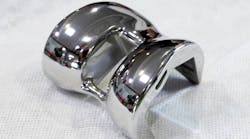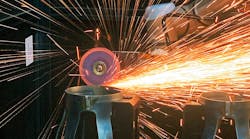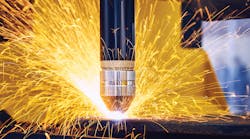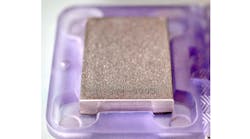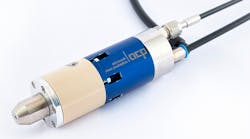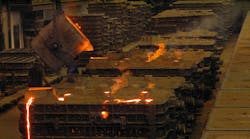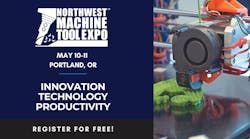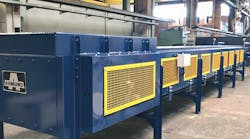Volvo Powertrain recently placed a contract with LOI Thermprocess for a new rotary-hearth furnace for gas carburizing of transmission parts, to increase process capacity at its Köping plant in Sweden. According to the furnace builder, “quality, efficiency, and high precision, combined with versatile production technology,” were Volvo Powertrain’s selection criteria for the new chamber.
Köping is one of the plants AB Volvo named last summer as it announced a $240-million capacity expansion for heavy diesel engine and heavy gearbox production. The plant manufactures gearboxes, and Volvo’s plan calls for a 50% capacity expansion there, with a budget estimated at $56.7 million.
Volvo also plans a 20% capacity increase for heavy diesel engines at Skovde, Sweden, and smaller investments at several other powertrain plants in other parts of the world.
LOI Thermprocess is a unit of Tenova that designs and builds industrial furnaces for metal processing. Volvo Powertrain’s new rotary-hearth gas-carburizing furnace will be heated by vertically positioned low-NOx radiant tubes, and designed with zone separation for flexible programming. The heat-up, carburizing, and diffusion zones are separated by thermally insulated, gas-tight intermediate doors. The builder says that zone separation ensures precise temperature and atmosphere control in the various furnace zones.
LOI Thermprocess explains that using a controlled atmosphere enhances product quality, and reduces process times and operating costs. Charged products (shafts and gears) will be conducted through the furnace on trays, which are charged and discharged by manipulators to reduce wear. Once the heat-treating cycle is completed, the charges can be quenched in an oil bath at oil temperatures of 40-70°C or 50-200°C.
The new furnace will be in operation at Köping in June 2009.
Latest from Finishing
Latest from Finishing
Finishing
Targeted Surface Finishing for Implants
July 11, 2023
New Products
Compliant-Angle Grinding Tool
June 27, 2023
Finishing
Automated Plasma Cutting Removes Sprues
April 4, 2023
New Products
Define Ra Value for Blast Finishing
March 28, 2023
New Products
New Tech for CO2 Jet Cleaning
Feb. 28, 2023
Issues and Ideas
Staying Safe from Dangerous Dust
Feb. 6, 2023
Events
Northwest Machine Tool Expo 2023
May 11, 2023 - May 12, 2023
New Products
Cleaning and Sorting Conveyor
Jan. 24, 2023
